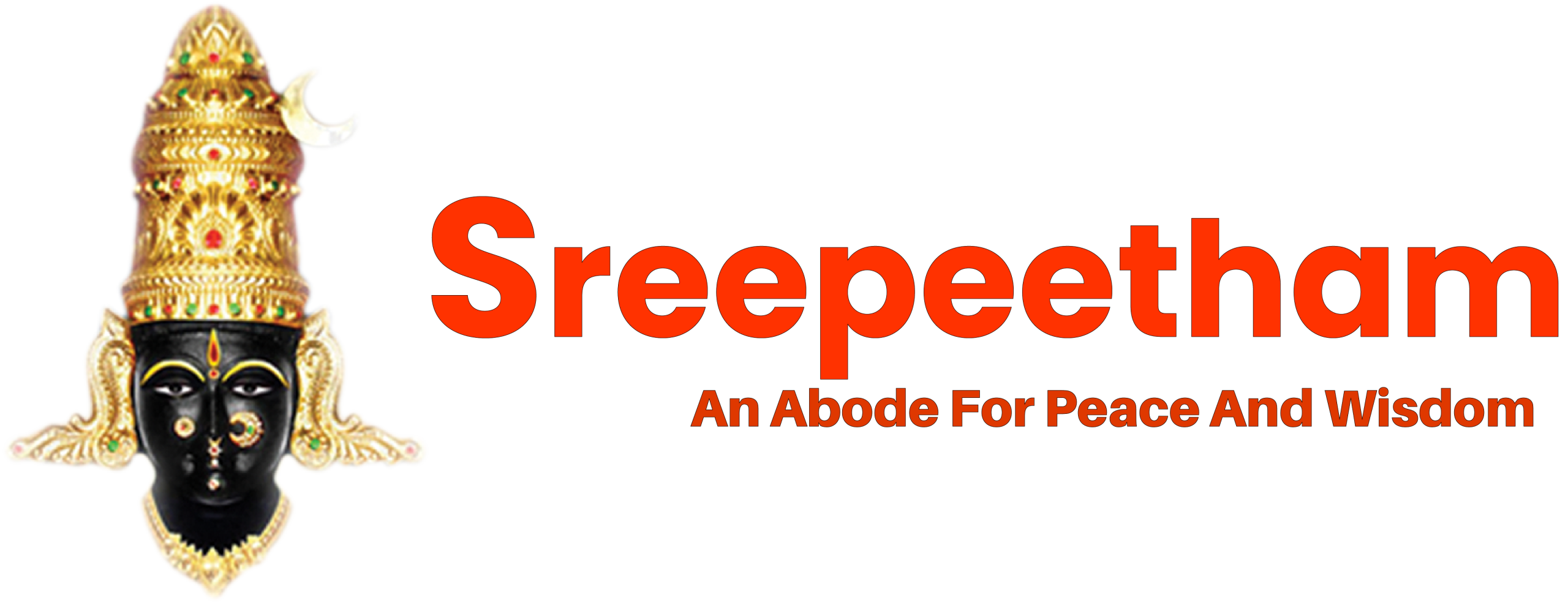
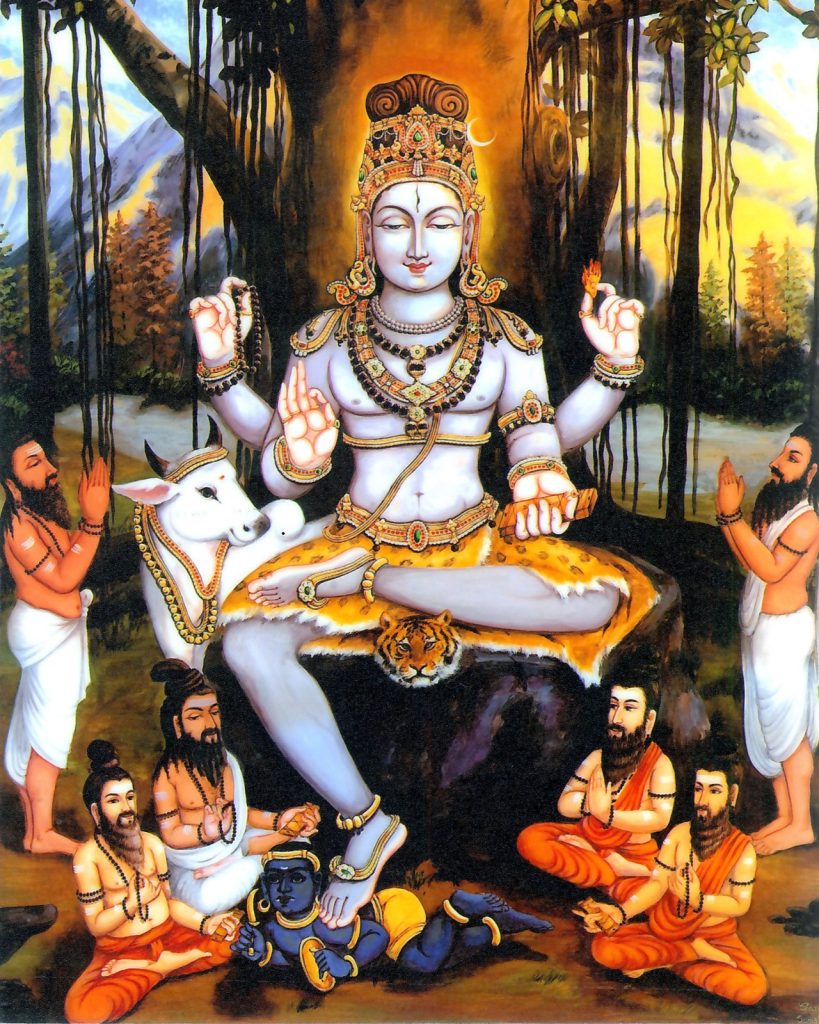
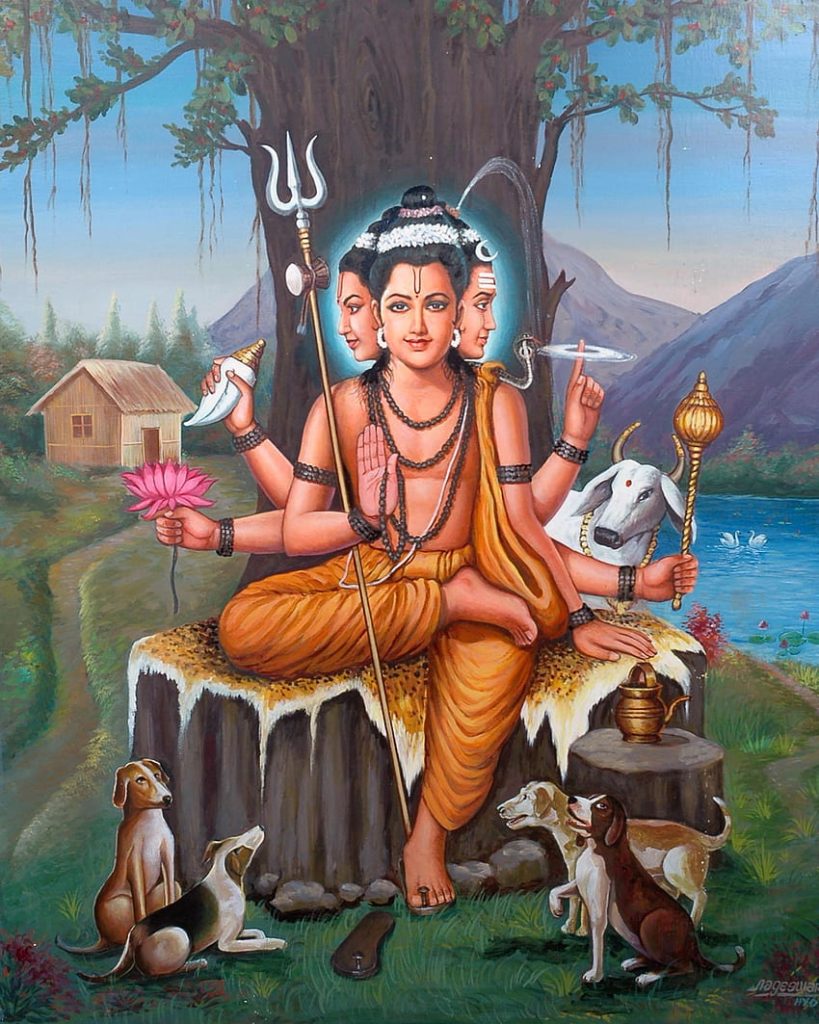
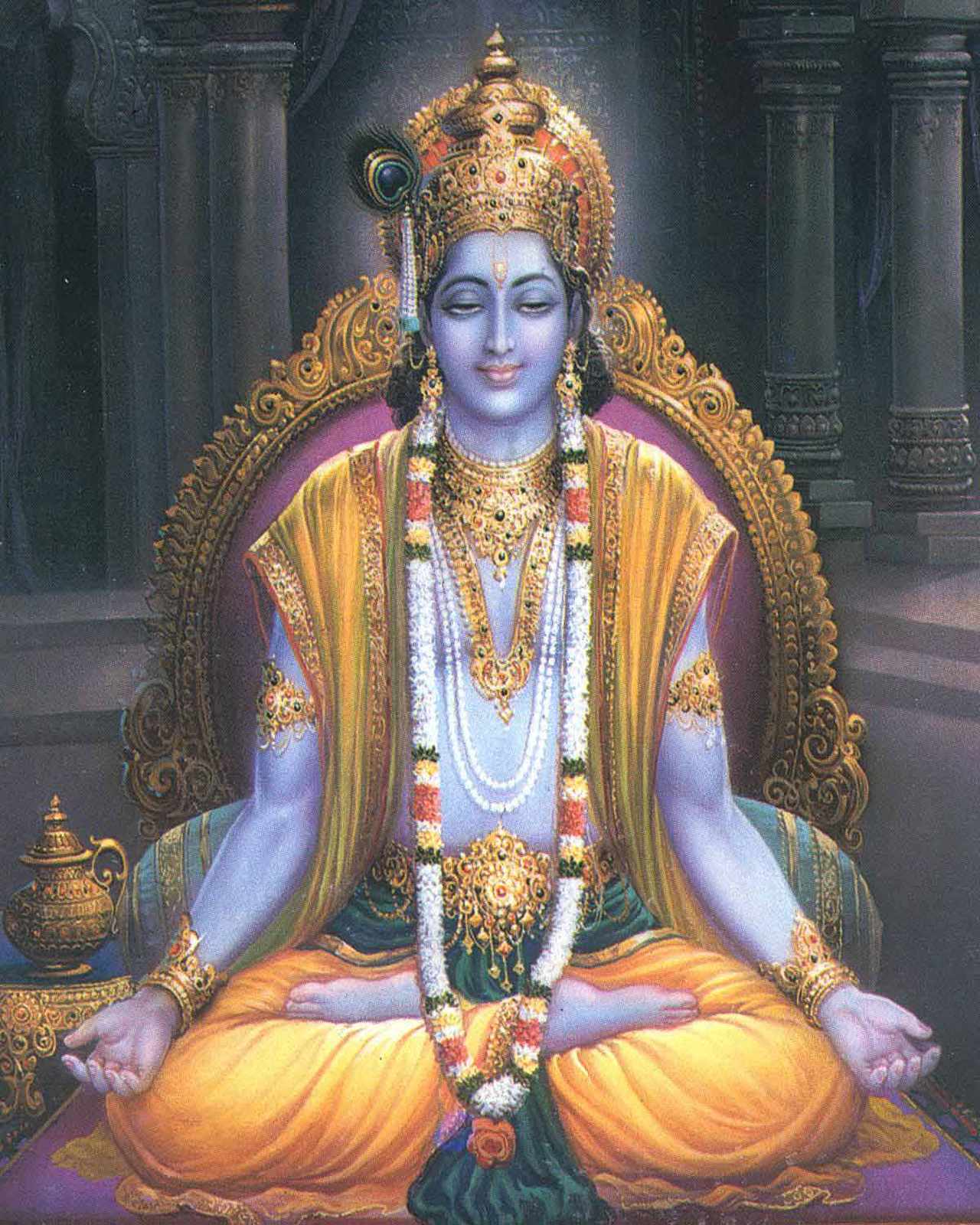
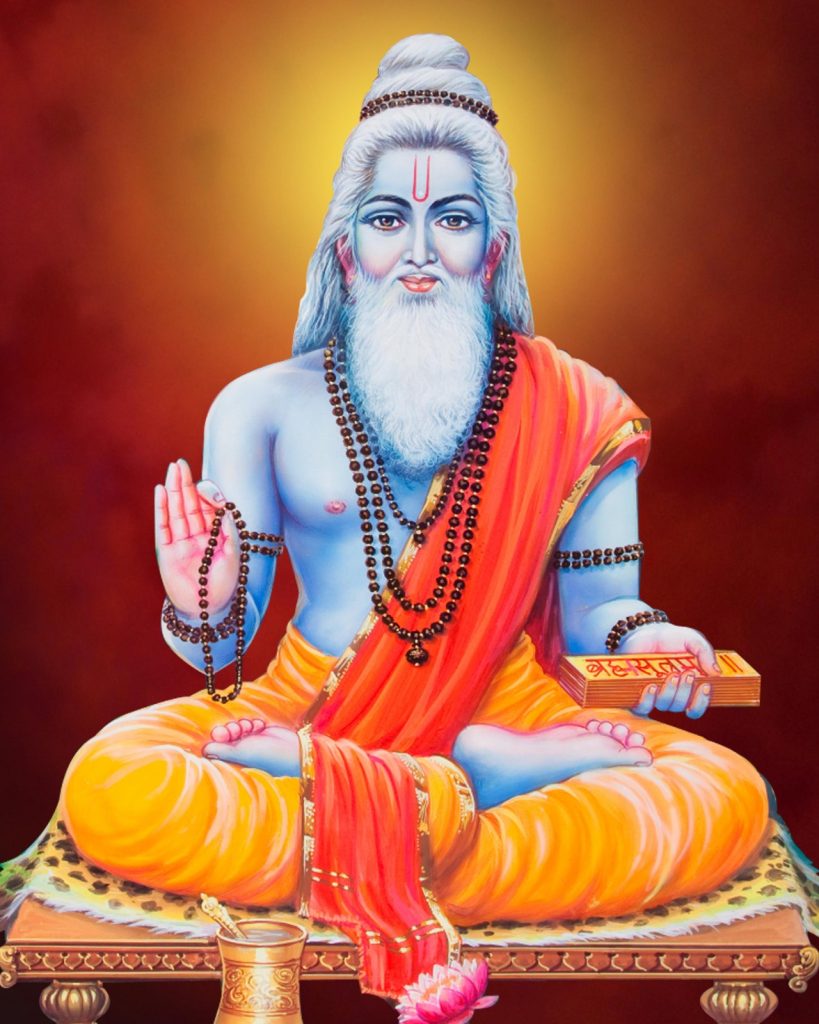
Adi Shankaracharya was a philosopher and theologian from India who lived in the eighth century. He is widely known for his influential commentaries on the Upanishads Bhagavad Gita and Brahmasutra.
Sankaracharya(788-820 A.D.) was bornin a family of Nambudiribrahman sect in a village called Kaladi in the State of Kerala. His parents were pious couple having deep religious culture. His father was a priest in a Shiva temple. In the times of Sankaracharya, there was no powerful king in south India; and this period noticed the rise of bhakti movement. Brahmans were the dominating group of people through their behaviour and divinely oriented life. He received necessary training in Vedic recital and study. He also attained proficiency in languages in his early age. His father died when he was only 7 years old. He exhibited extraordinary intelligence in his boyhood, mastering all the then-current theologies and philosophies by the age of 17. A number of miracles are associated with his life. One of which is as follows:
According to the divine wish,Sankaracharya had to become a religious teacher, Sannyasin; but his mother was not interested in it. One day it is said that a miracle happened: When he was taking bath in a nearby river, a crocodile caught hold of his leg and dragged him; his mother saw and cried. Then he asked his mother to give permission to take Sannyasin, so that the crocodile might leave him according to the divine wish. At this crucial hour his mother agreed, and he was released from the jaws of the crocodile dramatically. Thus he had become a Sannyasinto take up his chosen divine mission.
His mission was not to bring quarrel among various theological systems but to see that a sprit of unity prevails. He interpreted the theology of Upanisads and preached it for the benefit of humanity, as people are misguided with false doctrines. He travelled whole India. In his journey, it is said that he met many people including Govinda, and Gaudapada (who wrote verse commentaries on the Upanisads, the Bhagavad Gita and the Brahma Sutra in Benaras).
His teachings or the doctrine of AdvaitaVendantacan be summed up in a half a verse: “Brahma Satyam JaganMithyaJivoBrahmaiva Na Aprab (Brahman or the Absolute is alone real; this world is unreal; and the Jiva or the individual soul is non-different from Brahman)”.Core teachings that arise from his works are:
You are not your thoughts. You are the awareness behind the thoughts. Thoughts are often negative and painful, yearning for or fearing something in the future, complaining about something in the present, or fearing a matter from the past. However, the thoughts are not you; they are a construct of the ego. Awareness of your thoughts without being caught up in them is the first step to freedom.
Only the present moment exists. That is where life is Becoming aware of ‘now’ has the added benefit that it will draw your attention away from your (negative) thoughts. Use mindfulness techniques to fully appreciate your surroundings and everything you are experiencing. Look and listen intently. Give full attention to the smallest details.
Accept the present moment. It is resistance to the present moment that creates most of the difficulties in your life. However, acceptance does not mean that you cannot take action to rectify the situation you are in. What is important is to drop resistance so that you let the moment be, and that any action arises from deeper awareness rather than from resistance.
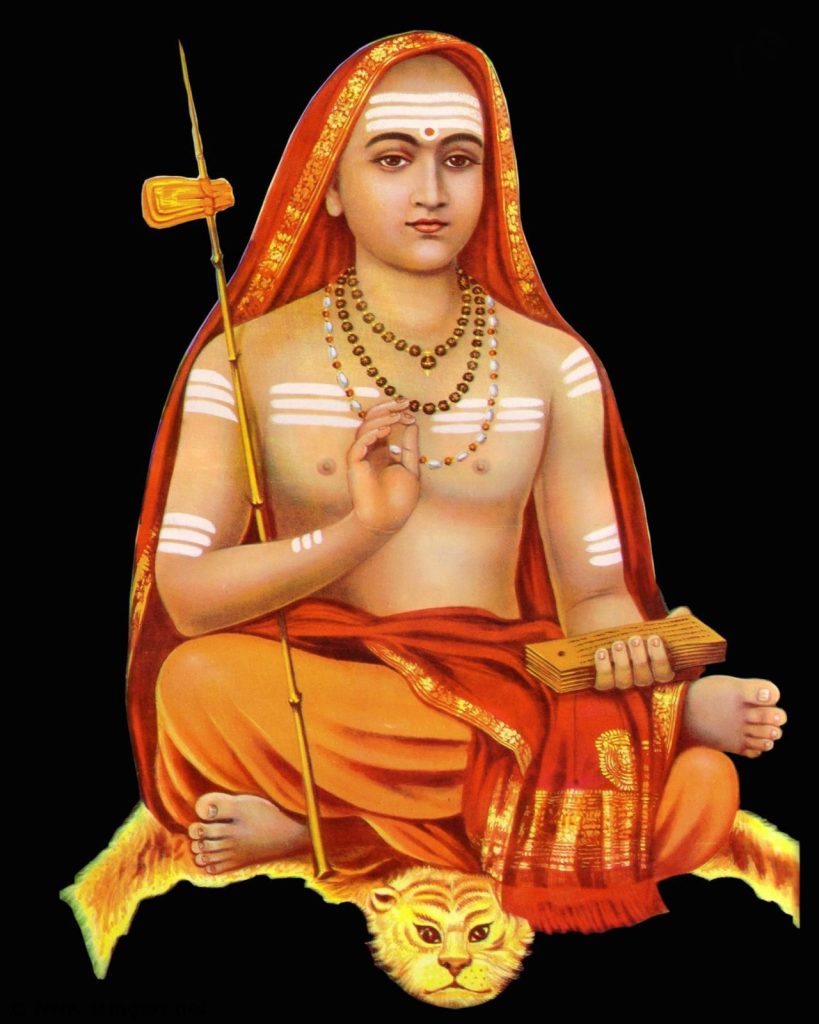
Observe the pain body. Years of conditioned thought patterns, individually and collectively, have resulted in habitual emotional reactions with an apparent personality of their own. During ‘pain-body attacks’ we become completely identified with this ‘pain identity’ and respond from its agenda-which is to create more pain for ourselves and others. Observing the pain-body is awareness itself arising-as it allows humans to separate from this unconscious identification with pain.
Everything that exists has Being, has God essence, has some degree of consciousness. Even a stone has a rudimentary consciousness; otherwise it would not be, and its atoms and molecules would disperse. Everything is alive. The sun, the earth, plants, animals, humans-all are expressions of consciousness in varying degrees, conscious manifesting as form. The world arises when consciousness takes on shapes and forms, thought forms and material forms. The ancient seers of India saw the world as lila, a kind of game that God is playing. You do not truly know that until you realize your own God-essence as pure consciousness. When we talk about watching the mind we are personalizing an event that is truly of cosmic significance: through you, consciousness is awakening out of the dream of identification with form and withdrawing from form. This foreshadows, but is already part of, an event that is probably still in the distant future as far as chronological time is concerned. That event is called-the end of the world. When consciousness frees itself from its identification with physical and mental forms, it becomes what may be called pure or enlightened consciousness or presence.
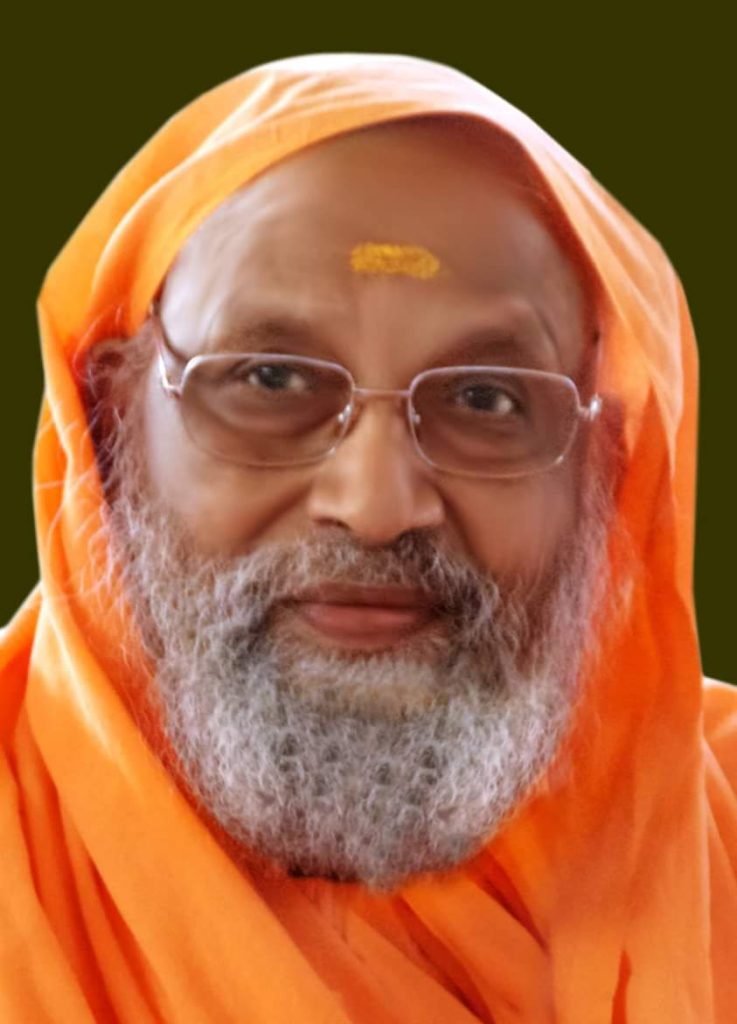
Pujya Sri Swami Dayananda Saraswati was a distinguished, traditional teacher of Vedanta. His depth of understanding and nuanced appreciation of both Eastern and Western cultures made him that rare teacher who could communicate the vision of non-duality to modern listeners. He was able to make one see, with immediacy, the truth of oneself as the whole.
An eminent teacher of Vedanta and an erudite scholar in Sanskrit, Swamiji was well known for his excellent communication skills. Swamiji taught Vedanta in India for more than five decades, and around the world from 1976. In his public talks abroad, Swamiji spoke at many prestigious forums, and addressed international conventions, UNESCO and the United Nations, where he participated in the Millennium Peace Summit.
A teacher of teachers, Swamiji designed and taught six in-depth Vedanta courses, each spanning 30 to 36 months and eight more have been conducted with his guidance. The graduates from these courses are now acharyas, teaching around the world. More than two hundred are sannyasis and are highly respected as scholars and teachers throughout India and abroad. Some of these Swamis and Swaminis have conducted their own long-term residential courses under his guidance and with his assistance.
The Ashrams founded by Swamiji in India are the Arsha Vidya Pitham in Rishikesh, the Arsha Vidya Gurukulam at Annaikatti, Coimbatore and the Arsha Vijnana Gurukulam at Nagpur. In the U.S., Swamiji founded the Arsha Vidya Gurukulam at Saylorsburg, Pennsylvania. Regular teaching programs in Vedanta, Sanskrit, yoga etc. are being conducted at these institutions. In addition, his students have set up many teaching centers in India and abroad that carry on the tradition of Vedantic teaching.
After teaching Vedanta for over four decades, Swamiji anticipating an erosion of dharma started various initiatives. In order to protect dharma, the person living a life of dharma, the dharmi, who is integral for protecting sanatana dharma needed to be protected. With this vision, Swamiji started the Dharma Rakshana Samiti in 1999, which spreads awareness of the richness of Vedic culture.
In 2000, Swamiji convened the Hindu Dharma Acharya Sabha, an apex body consisting of all the prominent acharyas of various sampradayas of Hinduism to address the need for an official unified voice to represent Sanatanana dharma as a whole. The Sabha actively engages in preserving what is sacred for a Hindu by giving a strong voice to various causes like the Tirupati declaration, Ram Sethu and Tehri dam. The Acharya Sabha also engages with other religions of the world in an effort to promote peace and unity among religions. Swamiji convened two Hindu-Buddhist and Hindu-Jewish dialogues which were instrumental in promoting inter-faith understanding and creating mutual respect among the religions.
Swamiji also initiated and supported various humanitarian efforts for the last forty-five years. A significant one among these is the establishment of All India Movement for Seva in 2000. Awarded consultative status with ECOSOC (Economic and Social Council) by the United Nations in 2005, this organization is devoted to serving people in the remote areas of India, mainly in the field of Education and Health Care. It as an integrated community development program that reaches out to the tribal and rural people living in remote parts of the country, bringing them educational, nutritional, medical and infrastructural assistance. AIM for Seva runs over 120 free student homes for needy students spread all over the country.
In November 2001, Swamiji convened the first World Congress for the Preservation of Religious Diversity in Delhi, inaugurated by the Dalai Lama and the then Prime Minister Sri A.B. Vajpayee. An important outcome of the Congress was the formation of a Global Commission for the Preservation of Religious Diversity, spearheaded by Swamiji. Swamiji was also active in forming and participating in the Women’s Global Peace Initiative, which was convened at the United Nations in Geneva in October 2002.
Swamiji promoted several international events and participated as a speaker in many global forums, among which are: the United Nations gathering of NGOs, the UNESCO Seoul Global Convention, the United Nations 50th Anniversary Celebration, the Millennium World Peace Summit, the International Congress for the Preservation of Religious Diversity, the Conference on the Preservation of Sacred Sites, the World Council for Preservation of Religious Diversity, the Youth Peace Summit, the Global Peace Initiative of Women Religious and Spiritual Leaders, a Hindu-Christian dialogue with the World Council of Churches, and the Hindu-Jewish Leadership Summit.
In 2006, Swamiji initiated a renewal of the Thirumurai tradition at Siva temples. Through this project, the Oduvars who are the traditional singers of Thirumurai are encouraged and honoured with citation and cash reward.
In 2008, Swamiji represented Hinduism at the International Inter religious Conference at The Netherlands to participate and sign the Faith in Human Rights Statement, a historic document that vouchsafes human rights and fundamental freedom endorsed by the religious leaders of the world.
